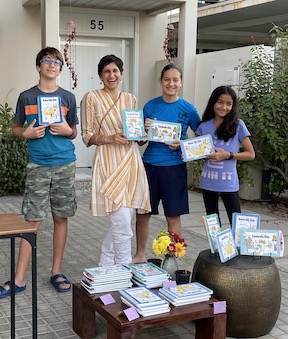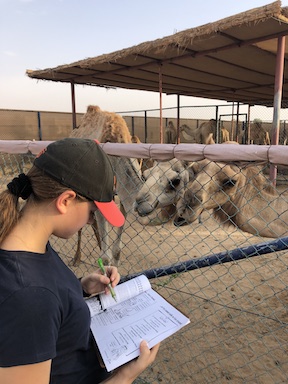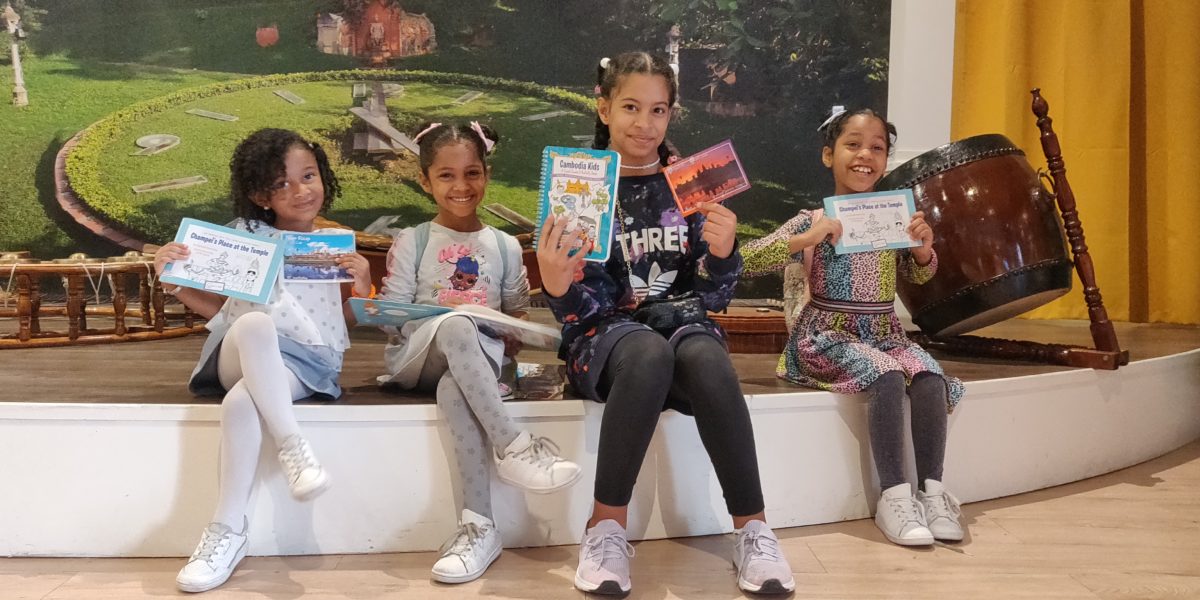On a bright, sunny morning in 2013, Ambika Anand Prokop was roaming around the temple of Angkor Wat in Cambodia with her family. Anticipating that her young daughters would soon tire of the heat and humidity and start begging to return to the hotel swimming pool, Ambika created a scavenger hunt to keep them occupied. Not only did it work, but her children learned about the carvings of Hanuman the Monkey God, Ravana the Demon King, and King Suryavarman II, who built the 1000-year-old temple. The success of this homemade scavenger hunt led Ambika to create Greenfeet Guides.

Because her husband works for the Foreign Service, Ambika’s family has lived all over the world. As they traveled, she saw the need for educational tools for parents like her who want to open their children’s eyes to the cultural and natural wonders of our world. “The world is a wonderful classroom,” she says. “But there really aren’t a lot of resources out there to help children get the most out of it.”
For her children, Ambika combined stories about the places they lived with her own treasure hunts and activities to help them make an emotional connection to each place and culture they encountered. “Having stories and activities to do made a difference in how my children experienced their environments,” Ambika says. “Then it occurred to me that many other families would appreciate a resource like this, too.”
So Ambika used her experience as a school teacher to create a fun and educational children’s book series. She took the tools she had developed for her own family and created Greenfeet Guides, which combine treasure hunts with adventure stories and educational activities that can be enjoyed whether in another country or from home. Her first two books, “Cambodia Kids” and “Dubai-UAE Kids,” each have two age-appropriate versions: one for children ages 4-8 and the other for ages 8+. Ambika plans to add other books and locations to the series over time.
As a former stream biologist, Ambika soon saw the connection between her books and the environmental stewardship that had been part of her own career path. “The purpose of Greenfeet Guides is to connect kids to the incredible cultures and unique natural landscapes around the world,” she says. “From an ecosystem perspective, if I can help kids learn to truly appreciate the world around them, then the hope is that they would want to take care of it.”
So when it came time to publish her books, Ambika set out to do it in the most sustainable way possible. She offsets the carbon footprint of her travels to research the books, avoids plastic, and uses recycled papers and environmentally friendly coatings in the books themselves. Everything in the Greenfeet Guides is 100% recyclable or compostable.

When her family moved back to the United States, Ambika began looking for printing partners that matched her sustainability mission. She had to discern true environmental commitment from those just looking to win business. “There is a lot of greenwashing out there, with printers saying that they are offering sustainable solutions without being able to back that up,” she admits. “To figure out who’s who, you have to have a conversation—to determine whether what they are claiming is actually from the heart.”
Her search led her to Ecoprint. “It was clear to me that Bobby Firestein has genuinely internalized the mission of sustainability,” she says. “He is not just someone who is saying what he needs to say, but who is trying to achieve the goal.” Ambika was particularly impressed that Firestein took the time to sit her down and educate her about the entire process of printing sustainably: from the recycled content in today’s papers to the value of partnering with a company that draws its energy from renewable energy sources. “In the places I lived previously, discussing renewable energy sources with local printers was a nonstarter, so I really appreciated that,” she says.
“Not only am I learning a lot about sustainable printing, but I have a reliable partner that has its heart in the right place.”
Ambika Anand Prokop
Ecoprint also worked with Ambika to find ways to minimize both the cost and environmental footprint of her book design. For example, instead of laminating stock or gluing two cover weight papers to create a sturdy cover, Ecoprint suggested folding a longer cover page over, then using the interior of the foldout as a treasure map. This provided sturdiness while eliminating both the cost and the environmental footprint of gluing. “I was so impressed that Ecoprint took the time to work with me and come up with these kinds of solutions,” Ambika says.
“It is nice to partner with someone with truly sustainable strategies,” she says. “Not only am I learning a lot about sustainable printing, but I have a reliable partner that has its heart in the right place.”

